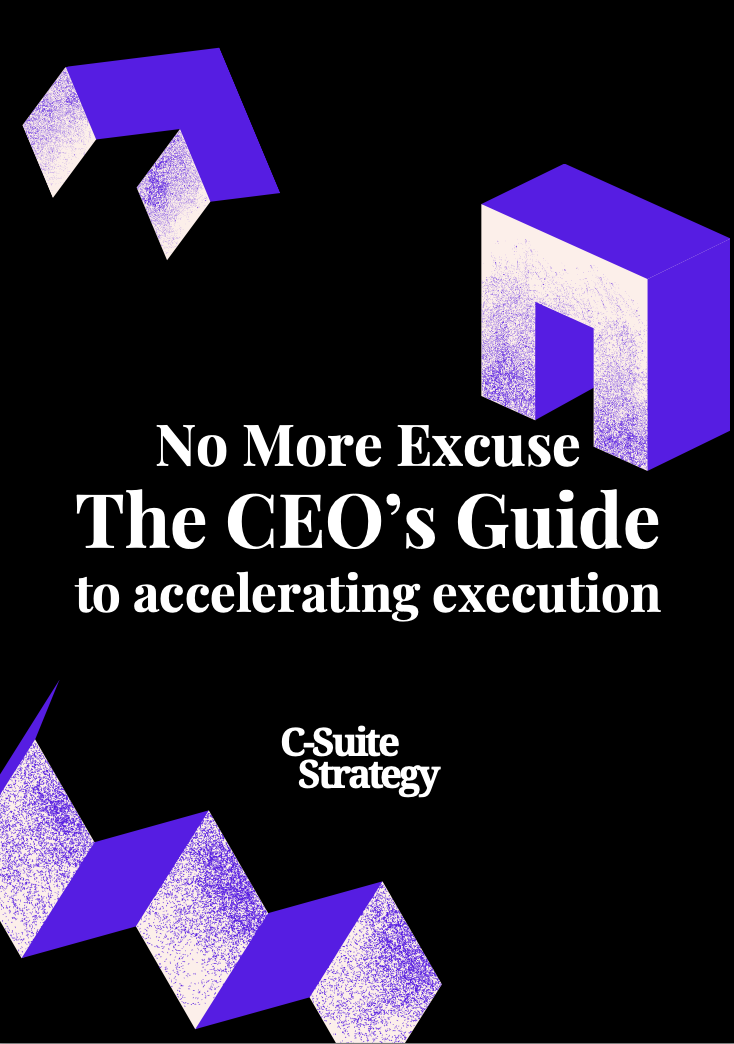
Understanding the Role of a Sparring Partner
Exploring the Concept of a Sparring Partner
In the evolving business landscape, CEOs are constantly seeking innovative ways to enhance their strategic thinking and drive strategic initiatives. One such method gaining traction is the use of a sparring partner. But what exactly does this role entail? Essentially, a sparring partner serves as a sounding board, offering CEOs a fresh perspective on their strategic ideas and challenges. This relationship is not about competition but collaboration, where the sparring partner helps refine strategies and develop future skills.
The Strategic Value of a Sparring Partner
Engaging with a sparring partner can significantly enhance a CEO's strategic insights. By providing an external viewpoint, these partners help executives navigate the complexities of digital transformation and face challenges head-on. This collaboration fosters a deeper understanding of strategic issues, enabling CEOs to make more informed decisions. Moreover, sparring sessions can stimulate innovative thinking, offering new strategies to address evolving business needs.
Benefits of a Virtual Sparring Partner
With the rise of remote work, virtual sparring partnerships have become increasingly popular. These remote collaborations offer flexibility and access to a broader pool of expertise. Utilizing digital tools, CEOs can engage with their sparring partners from anywhere, making it easier to integrate these sessions into their busy schedules. This approach not only supports the future work environment but also ensures that strategic discussions are not limited by geographical constraints.
For more insights on how leadership can drive strategic success, consider exploring essential inquiries for leadership.
The Rise of Remote Sparring Partnerships
The Emergence of Digital Connections
With the increasing demand for flexibility and the rapid pace of digital transformation, remote sparring partnerships have steadily risen to prominence. CEOs are recognizing the benefits of engaging with a strategic sparsring partner virtually. This has given rise to a new era where business leaders can leverage expertise without geographical limitations.
As businesses increasingly move towards digital landscapes, the demand for remote interactions is growing. These digital connections provide unique opportunities for CEOs to enhance strategic thinking and develop future-ready skills. Engaging in virtual sessions can help executives think beyond traditional frameworks and embrace the evolving nature of business strategies.
Leveraging Strategic Tools for Virtual Engagement
Remote sparring partnerships thrive on the use of strategic tools that facilitate effective communication and idea exchange. Video conferencing platforms, collaborative online workspaces, and project management software have grown to be indispensable for driving strategic insights. These tools enable CEOs to hold productive sparring sessions, share real-time feedback, and deepen their understanding of strategic alignment.
Utilizing such tools ensures that information is timely, accurate, and easily accessible, which is crucial for maintaining momentum in strategic discussions. The ability to connect virtually allows for immediate responses to challenges and quick iteration of strategic ideas.
Adapting to Evolving Business Landscapes
The rise of remote sparring partnerships has marked a shift in how CEOs approach strategic development. By connecting virtually with experienced sparring partners, they can gain fresh perspectives on the shifting business landscape. This remote collaboration helps CEOs face challenges with renewed strategic thinking and encourages more innovative approaches to strategy formulation.
Additionally, virtual sparring partnerships support the ongoing development of future work strategies. This mode of collaboration empowers CEOs to continuously drive strategic improvements, ensuring their organizations remain competitive and resilient in an ever-changing environment.
Given these developments, crafting an effective executive briefing becomes crucial for maintaining clear and focused communication among leadership teams, ensuring the successful integration of remote sparring insights into overall business objectives.
Selecting the Right Sparring Partner
Choosing the Ideal Collaborator for Strategic Growth
To successfully navigate the evolving business landscape, selecting the right sparring partner is pivotal for any CEO aiming to enhance their strategic vision. This choice can significantly impact the development and execution of effective strategies. Finding the ideal virtual partner requires a thoughtful approach to align their insights with your business's goals. Here are some key considerations to guide the process:- Expertise Alignment: Ensure the sparring partner's skills and experience align with your company's industry and strategic objectives. Their understanding of digital transformation and future work trends will be instrumental in assessing potential opportunities and challenges.
- Tools and Platforms: Familiarity with innovative tools and platforms for remote collaboration is essential. These tools facilitate seamless communication and strategic thinking sessions, enhancing the efficacy of the partnership.
- Analytical Skills: A sparring partner with strong analytical capabilities can provide valuable insights into complex business environments. This helps CEOs develop a nuanced understanding of strategic options.
- Objective Perspective: Opt for a sparring partner who offers an unbiased view, challenging existing strategies with fresh perspectives. Their ability to face challenges and drive strategic dialogue will foster growth and innovation.
Integrating Remote Sparring into Strategic Planning
Incorporating Virtual Sessions for Strategic Advancement
To effectively incorporate a remote CEO sparring partner into your strategic planning, it's essential that the shift seamlessly aligns with your existing executive workflow. Here are some practical strategies to consider:- Leverage Digital Tools: Maximizing the potential of digital transformation is imperative. Executive leaders should utilize advanced virtual tools that support collaboration and brainstorming. These tools enable real-time feedback and strategic thinking, breaking geographical barriers and fostering development of future skills.
- Establish a Regular Cadence: Schedule recurring sparring sessions that align with your strategic milestones. This not only helps reinforce the commitment to strategic progress but also keeps the future work goals in a constant state of review and adjustment. Consistent interactions drive strategic alignment and keep the focus sharp.
- Foster Open Communication: Encourage transparent and candid communications in your sessions. CEOs collaborating with a sparring partner remotely should ensure that channels of communication are open and efficient, to ensure thorough understanding of the evolving business dynamics and strategic challenges.
- Integrate into Strategic Frameworks: The insights gained from sparring should be purposefully integrated into broader strategic frameworks. This could mean updating strategic plans or adjusting targets to reflect new understandings and insights from sparring sessions.
Overcoming Challenges in Remote Collaboration
Addressing Obstacles in a Remote Setting
In the realm of strategic collaboration, particularly involving a virtual sparring partner, challenges often rear their heads. The very nature of remote work introduces unique dynamics in how CEOs and their sparring partners engage, communicate, and derive insights crucial for driving forward-thinking strategies. Firstly, communication can be a hurdle. Virtual interactions lack the immediacy and nuances of face-to-face meetings, leading to potential misunderstandings. To mitigate this, executives should leverage robust digital tools designed for effective virtual communication and strategic work sessions. Secondly, building trust remotely demands a different approach. Establishing credibility and understanding between parties is pivotal. A time investment in regular video calls and periodic business reviews can foster a strong foundation. It's essential for CEOs to intentionally nurture this relationship, ensuring that their sparring partner is seen as a trusted advisor whose insights can help shape the organization's future strategies. Furthermore, adapting traditional sparring methods to suit a digital transformation era is vital. This may include integrating advanced AI-driven tools that can simulate complex business scenarios, offering fresh perspectives even from afar. The rise of such technology aids in enhancing strategic thinking without the confines of physical presence. Finally, ensuring that sessions translate into actionable business outcomes requires clear goal setting and regular strategic evaluations. CEOs should craft a structured roadmap to track progress, keeping the organization's evolving business environment in perspective. This will help maintain focus and ensure strategic alignment with broader organizational goals. Navigating these challenges calls for an adaptable mindset and a proactive approach, ensuring that remote sparring partnerships enhance, rather than hinder, the strategic vision.Measuring the Impact of a Sparring Partner
Assessing Strategic Value and Progress
Measuring the impact of a sparring partner on your strategic vision involves assessing both tangible and intangible benefits. Companies employing a virtual sparring partner approach should prioritize evaluating the enhancement in strategic thinking and execution capabilities. Let's explore the facets you might consider:- Strategic Objective Alignment: Examine whether your business goals are more clearly defined and aligned. Does the collaboration help your executive team in crystallizing their objectives, and are those objectives effectively communicated across the organization?
- Decision-Making Quality: Analyze the quality of decision-making within strategic sessions. The insights from sparring can lead to more informed and innovative strategies, potentially crucial in an evolving business landscape. Look for improvements in both short-term tactical choices and long-term strategic planning.
- Enhanced Executive Skills: Monitor the development of strategic skills among CEOs or executive teams. Is there an improvement in critical thinking and understanding of complex business challenges? Effective sparring should cater to the personal and professional growth of top executives.
- Remote Collaboration Efficiency: Given the rise of digital transformation, the effectiveness of remote work platforms and tools used in sparring sessions is key. Assess how these sessions are being integrated into your strategic planning workflow, and check if remote executives face obstacles or improve in collaborative effectiveness.
- Adaptation to Future Work Needs: As business contexts evolve, the agility of a company in responding to future work environments can serve as a metric. An effective sparring partnership should drive strategic adaptability, ensuring your business is well-positioned to seize new opportunities and face challenges with confidence.














